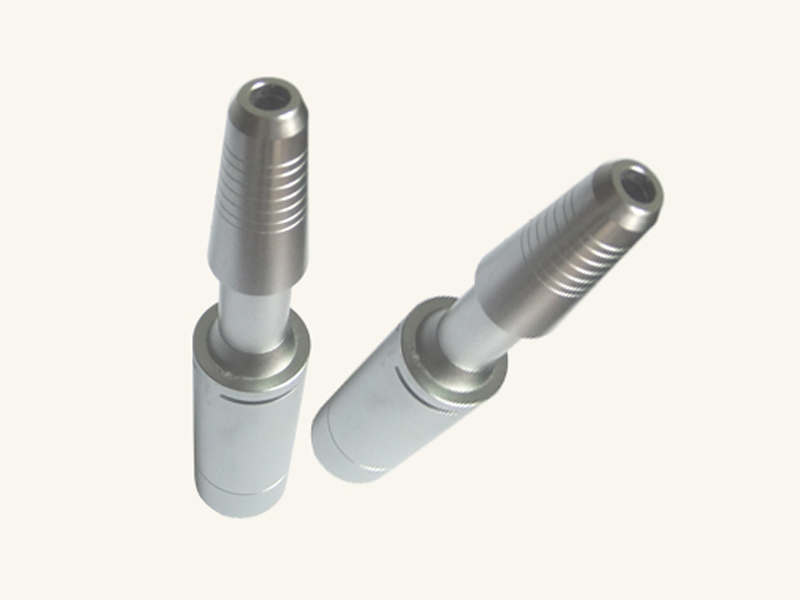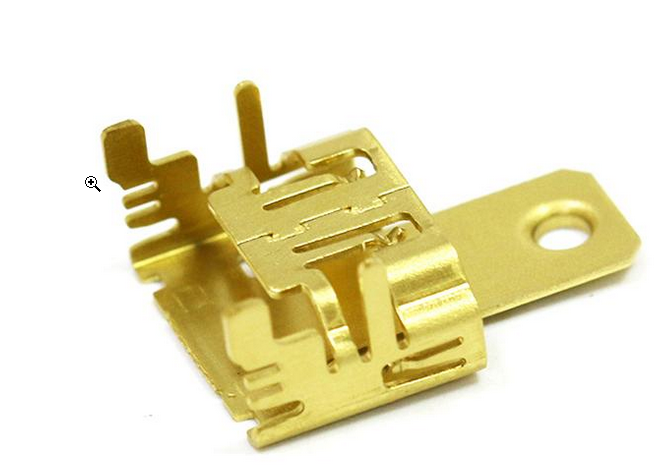Precision machining technology for aluminum alloy parts is a comprehensive and systematic project that utilizes CNC machine tools, precision measuring tools, measuring tools, microelectronics technology, environmental technology, computer technology, CNC technology, etc., further improving the machining accuracy of aluminum alloy precision parts. With the development of manufacturing and the continuous progress of material science, various industries have increasingly high requirements for the precision of aluminum alloy parts. In addition to machining accuracy, higher requirements are also put forward for the surface integrity of aluminum alloy precision parts. With the continuous development of science and technology, the machining accuracy, complexity, and difficulty of aluminum alloy parts are gradually increasing;

Taking diamond cutting as an example, the radius of the cutting edge arc has been developing in a smaller direction because its size directly affects the roughness of the processed surface, which is directly related to the reflectivity of the optical mirror. In the current situation where reflectivity requirements are increasingly high, for example, the reflectivity of laser gyroscope mirrors has been increased to 99.99%, which inevitably puts forward sharper requirements for diamond cutting tools. Foreign scholars have successfully conducted thinning experiments, achieving a cutting thickness of 1nm and a cutting edge arc radius of nearly 2-4nm. In order to achieve high precision, the transmission structure of the diamond grinding machine has been modified, using air bearings as support. The end face runout of the grinding disc can be corrected on the CNC equipment by itself, allowing the grinding disc to bounce. The end face runout is controlled below 0.5um, The problem of sharp edges in grinding machines has been solved, but detection has become a challenge. In foreign countries, the use of gold wire indentation scanning electron microscopy can achieve a measurement accuracy of 50nm; With the further improvement of precision machining of aluminum alloy parts, foreign countries have added secondary electron emission devices on SEM, which can detect 20-40nm. Huazhong University of Science and Technology and Harbin Institute of Technology in China have successfully used AFM to detect the radius of the cutting edge arc. The breakthrough in detection technology has created conditions for further exploration of micro cutting machines; The processing of hard and brittle materials generally adopts the method of grinding. Japan uses diamond grinding wheels to control the cutting depth and cutting amount. On aluminum alloy precision machining grinding machines, ductile grinding can be carried out, and even on the surface of glass, optical mirrors can be obtained. This is a major technological breakthrough. Jilin University of Technology in China has successfully combined ultrasonic technology with diamond cutting, achieving very significant results; The grinding wheel uses metal bonding agents to improve its service life, and Japan has adopted ceramic iron bonding agents to significantly increase the service life of the grinding wheel. Japan has developed the technology of online electrolytic correction (ELID) for grinding wheels. Expanded the application scope of ultra precision machining technology and achieved remarkable results in mirror processing; From natural diamonds to artificial diamonds, from superhard diamond films to the formation of back films, castings have created powerful conditions for the widespread use of diamond tools in ultra precision machining technology. In order to further expand the application field of diamond, extensive research has been conducted on diamond cutting technology, and some achievements have been made in deep cold cutting and cutting wind in carbon rich atmospheres;
Industry related technical personnel are dedicated to studying the mechanism of micro cutting of precision aluminum alloy parts, but it is difficult to directly observe the cutting points. Therefore, some scholars propose to miniaturize the cutting device, place it at the end of SEM for cutting and observation, and use advanced detection technologies such as computer simulation to further explore and study micro cutting; Ultra precision machining machine tools integrate a large number of advanced technologies, such as ultra precision spindles, high-precision positioning systems, micro feed devices, air flotation technology, NC systems, thermal stability technology, etc. Especially in some Western countries such as the United States, the United Kingdom, and Japan, ultra precision technology has become very mature. China has also made great progress and achievements in aluminum alloy precision parts processing technology and equipment research, laying a solid foundation for the further improvement of China's aluminum alloy precision parts processing technology level;


 Spanish
Spanish Arabic
Arabic Spanish Basque
Spanish Basque Portuguese
Portuguese Belarusian
Belarusian Japanese
Japanese Russian
Russian Icelandic
Icelandic Bulgarian
Bulgarian Azerbaijani
Azerbaijani Estonian
Estonian Irish
Irish Polish
Polish Persian
Persian Boolean
Boolean Danish
Danish German
German French
French Filipino
Filipino Finnish
Finnish Korean
Korean Dutch
Dutch Galician
Galician Catalan
Catalan Czech
Czech Croatian
Croatian Latin
Latin Latvian
Latvian Romanian
Romanian Maltese
Maltese Malay
Malay Macedonian
Macedonian Norwegian
Norwegian Swedish
Swedish Serbian
Serbian Slovak
Slovak Slovenian
Slovenian Swahili
Swahili Thai
Thai Turkish
Turkish Welsh
Welsh Urdu
Urdu Ukrainian
Ukrainian Greek
Greek Hungarian
Hungarian Italian
Italian Yiddish
Yiddish Indonesian
Indonesian Vietnamese
Vietnamese 简体中文
简体中文 Haitian Creole
Haitian Creole







